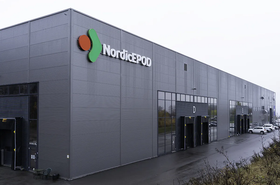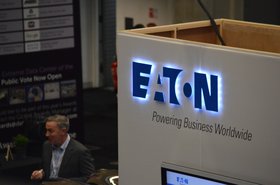Introducing the concept of the ‘Power of Six’, a set of six principles that are the foundation of our systematic approach to data center design and beyond. The holistic perspective on the ‘Power of Six’ adds value by aligning our solutions with your power infrastructure requirements and helps you advance towards the ultimate self-aware and self–optimized data center.
In this article, we explore how these systems engineering principles allow us to de-risk your design, reduce complexity, and optimize the performance of your data center.
This uses a methodical, multi-disciplinary approach that considers the powertrain components and their associated interdependencies across the full lifecycle, making it possible to create truly end-to-end engineered solutions.
In turn, providing both a commercial and technical benefit.
A vital element in this approach is the inclusion of a digital layer, for example, our Brightlayer Data Centres suite. This portfolio of digital software solutions helps you to efficiently manage increasingly complex ecosystems of informational technology (IT) and operational technology (OT) assets while providing full system visibility into your white space and grey space.
Let’s delve into each principle to understand its significance:
1. Design of critical power system components: The first principle focuses on understanding the characteristics, behaviors, and impacts of critical components within your power systems. By grasping these nuances, you can optimize performance, enhance energy efficiency, and ultimately meet your IT needs effectively. You can do this by undertaking an analysis of each component to understand its purpose, characteristics, and interaction within the system.
Using a digital software platform, you can optimize the placement, management, and integration of equipment. The objective is to enhance performance, predict failures, and optimize usage through the detailed design of each component and an intimate understanding of the interaction of all components from the very start, from grid to chip.
It helps to understand the components’ characteristics and impact on electrical properties, voltage, current capacity, and impedance. To increase efficiency, it is important to reduce component losses and improve the power factor and balance loads. Systems should be designed for redundancy and reliability, with redundant critical components and predictive maintenance at the component level. Finally, by considering critical components, you can use data analytics in the operational phase to improve efficiency, maximize utilization, and anticipate problems, making it crucial to implement…
2. Asset management and condition-based monitoring: The second principle highlights the importance of incorporating a digital layer into your power management system. This enables asset monitoring and management, paving the way for implementing proactive measures, increased lifespan, and optimized performance.
Continual monitoring and maintenance ensure that all components are running at peak efficiency while identifying potential risks that may arise within the system. This principle allows you to create a plan for optimizing performance, extending lifespan, predicting failure as well as replacing and upgrading hardware before its condition starts to pose a problem.
With the utilization of a digital layer with digital twinning capabilities, coupled with artificial intelligence (AI) and machine learning features, you can optimize performance already in the design stage by identifying areas where equipment may not function as predicted. You can also track energy efficiency through consumption monitoring and optimized usage and performance of the entire system. For example, within power distribution, it is important to monitor load usage and temperature, particularly that of transformer heat windings, and track the contact wear on switchgear. Such condition-based monitoring enables the move to...
3. System design: Since you also need to consider interdependencies beyond the powertrain, this principle encourages a broader system design approach, instead of looking at it as a series of functional blocks. Properly integrated components minimize energy wastage, ensuring the efficient use of high-power loads such as cooling to reduce the demand for the operation of the powertrain.
By having a well-designed, integrated system you can reduce component failure, optimize its usage, and prolong its lifespan, in turn contributing to your operational and sustainability goals. Improved communication and interfacing between system components can contribute to reducing the latency of data provided to optimize and maintain system performance and provide more…
4. Energy efficiency: By looking at options in the design stage to minimize power losses and optimize system efficiency, a systems engineering approach can support you in achieving your sustainability goals and reducing your operational costs. Selecting and considering the right equipment enables improved overall efficiency. For example, in low-voltage systems, using copper busbars will reduce power loss by around 25% compared to aluminum ones.
Along with this, a digital software platform monitors and manages energy efficiency through machine learning and AI to better understand at which point in the power distribution losses may occur and how they can be prevented. Coupled with other measures such as optimizing cable lengths and using transformers with low power losses, this enables energy saving and drives the…
5. Integration with renewables: Renewable energy sources are ever more important in the power ecosystem. It is therefore essential to understand the impact of integrating renewables and alternate power sources on system performance and power quality. Done properly, this helps to provide resilient and reliable power and reduces the likelihood of outages.
One such impact we need to understand is the impact of less rotating mass and less inertia within renewables, which in turn affects the quality of power flow along the powertrain due to less frequency control and more volatility.
The effects on harmonics and voltage fluctuations stemming from the introduction of more inverter-based power sources also need to be recognized. A digital layer enables you to understand the mix of renewable on-site and off-site generation, monitoring the power being consumed and its source. Managing the variability of supply and ensuring grid stability requires a…
6. Flexible and dynamic design: You need a flexible and dynamic design approach to accommodate changing demands and emerging technologies like AI. By staying adaptable, we ensure that our solutions remain relevant and effective in fast-evolving environments.
Eaton's products are thus able to meet the challenges associated with variable loads due to fluctuations in demand and generation, with a view to optimizing system operation, voltage levels, and power losses. By integrating a digital software platform, you can identify the changes required in a design and the best way of making any adaptations, while understanding their impact and optimising flexibility.
In conclusion, if the ultimate objective is to create a self-aware and self-optimized data center, then as an industry we need to shift towards a systems-based design. To achieve this, we collectively need to embrace a set of principles and adopt a systems mindset. The “power of six” is the enabler to make that happen! We need to start to use integrated digital software platforms, not just during operations, but at the early stages of design and throughout the data center lifecycle. This makes it easier for you to drive operational value and leverage the intelligent, actionable insights that come from your data.
During these uncertain times, to meet the evolving power and environmental demands, we need to start to think differently!
Grant Bilbow, digital data center solution manager at Eaton EMEA, also contributed to this article.
More from Eaton
-

Sponsored How to streamline data center sustainability governance
Moving beyond DCIM to give customers the sustainability information they really need
-

Eaton invests in data center power module firm NordicEPOD
NordicEPOD to expand pod output with new factories
-

Eaton acquires thermal monitoring solution firm Exertherm
Monitoring tech to be integrated with Eaton's Brightlayer software

